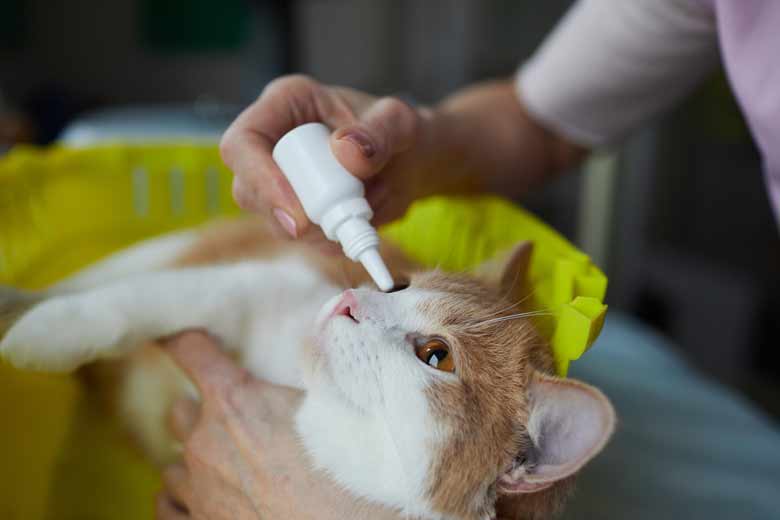
What is conjunctivitis?
The conjunctiva are the thin pink membranes of the eye. They line the globe, inner eyelids and third eyelid. Conjunctivitis is simply inflammation of these membranes.
Cause
In dogs, most forms are allergy based or bacterial infections. In cats, viral and bacterial infections are more common. Another cause is “dry eye”, where tear production is decreased or absent, this is a condition that is typically more common in our older patients. There are many other less common causes.
Look for one or more of the following signs:
- Red eyes
- Swollen conjunctiva
- Mucky discharge
- In dry eye, dogs show a thick, ropy discharge and the eyes look dry. They are predisposed to conjunctivitis
Diagnose
Your vet may run certain tests to determine if there is any underlying or concurrent conditions in your pets eyes as well as the conjunctivitis. A bright yellow stain may be applied to the surface of your pet’s eye to see if there is any damage to the corneal surface. If the stain is positive your pet has just been diagnosed with a corneal ulcer. Appropriate treatment will be started for your pet.
In our older patients certain underlying conditions can develop which predispose to conjunctivitis. The most common condition is Dry Eye. An easy test can be run in consult to assess your pet’s ability to produce tears. Insufficient tear production gives a diagnosis of Dry Eye and life long therapy will be started.
Treatment
For conjunctivitis, drops or ointments are the usual treatments. For allergic conjunctivitis, antiinflammatory and antibiotic drops may be used. Occasionally oral antibiotics are also necessary. Other conditions are treated accordingly.
An important part of treatment is cleaning of the eyes. Often thick discharges become stuck to your pet’s fur and are difficult to remove and uncomfortable to the patient. The best way to bathe the eyes is as follows:
- Wet a wad of cotton wool under warm water (warm so that you can still touch it)
- Squeeze out some of the water and place over the animal’s closed lids. Most animals find this very soothing and don’t object.
- Hold there for 10 seconds. This dissolves and loosens the discharge.
- Wipe away the discharge – from inside towards outside in one movement.
- Repeat as necessary until all discharge is cleaned away.
- If your pet has long hair around their eyes regular grooming is recommended.
There are three reasons for bathing the eye in this way:
- Soothing to pet.
- Removes discharge and remnants of the last application of ointment.
- Improves blood supply to area and helps with healing.
Prognosis
Allergic conjunctivitis usually resolves quickly, but like all allergies, may return at certain times of year or on exposure to the allergen, especially if the allergen is pollens in the air.
Infectious conjunctivitis has a good prognosis, uncommonly dogs and cats can transfer an infection from one eye to the other, or to other dog or cat members of the household.
Concurrent corneal ulcers require specific treatment as they are very painful. An elizabethan collar will be fitted for your pet to prevent further damage to their eye. Dry eye requires lifelong treatment, but the eyes can be made much more comfortable.